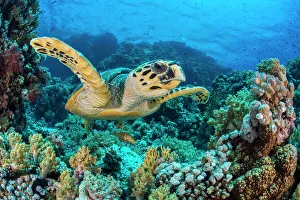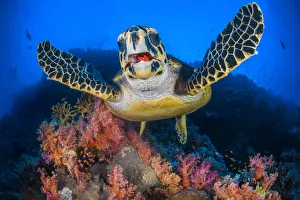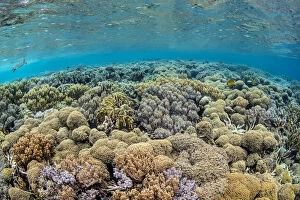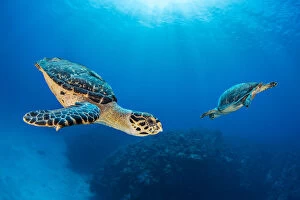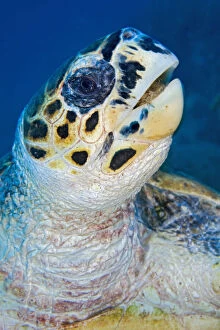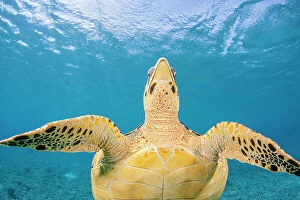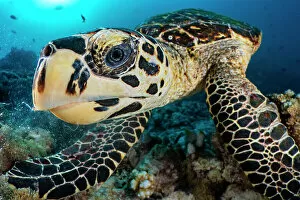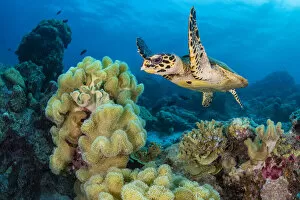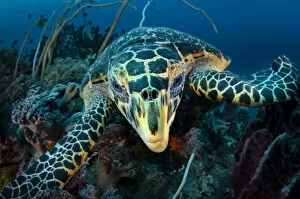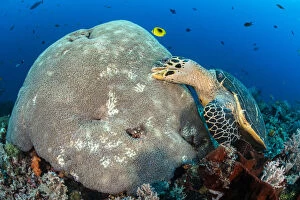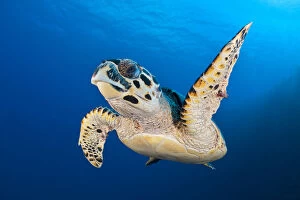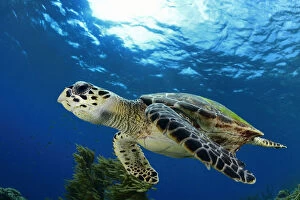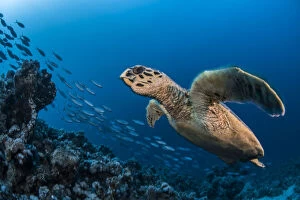Chelone Imbricata Collection
The critically endangered Chelone imbricata, commonly known as the Hawksbill sea turtle (Eretmochelys imbricata
For sale as Licensed Images
Choose your image, Select your licence and Download the media
The critically endangered Chelone imbricata, commonly known as the Hawksbill sea turtle (Eretmochelys imbricata), gracefully swims over a vibrant coral reef in the Pacific Ocean. This magnificent creature, with its distinctively patterned shell and ventral view captured in the Philippines, showcases both beauty and vulnerability. With its specialized diet, it delicately feeds on red soft corals like Dendronepthya sp. , creating an enchanting spectacle amidst the underwater world. As it glides along the reef, we witness its interaction with pink soft corals and observe a pair of hawksbill turtles circling each other above this diverse ecosystem. In another breathtaking encounter off Jackson Reef in Sinai, Egypt's Red Sea, a male hawksbill turtle indulges in chomping on soft coral Litophyton arboreum. These moments remind us of their crucial role as caretakers of our oceans' delicate balance. The Ari Atoll in Maldives offers refuge to these remarkable creatures but also highlights their critical endangerment status. A captivating image from Laamu Atoll reveals a hawksbill turtle swimming over leather corals (Sarcophyton sp. ), emphasizing their symbiotic relationship with marine life forms. Raja Ampat in West Papua, Indonesia presents an up-close glimpse of this species against a backdrop of stunning coral reefs—a testament to nature's unparalleled artistry. As we marvel at these snapshots capturing the essence of Chelone imbricata's existence, let us remember that conservation efforts are vital for protecting these majestic creatures and preserving their habitats for generations to come.

